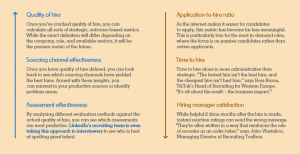Coke versus Pepsi. Mac versus PC. Yankees versus Red Sox. Harry Potter versus Lord Voldemort. There are opposing forces at work at just about every juncture of life, real or imagined. Those entities can push each other to be the best version of themselves.
I believe the same is true for the ad world. There’s a dichotomy at play whenever you look at large agencies versus mid-sized and small agencies. And though there is competition, there’s also a healthy level of motivation for each side to achieve its fullest potential.
I recently came to Ignite from the large agency world, so I’ve seen and lived both sides. While each has its own benefits, I’ve come across four ways my agency life is different now.
1. Being nimble, maneuvering, and adapting to clients’ rapidly changing needs isn’t such a chore.
Imagine a shopping cart with 15 cases of Dr Pepper. (Full disclosure: I don’t drink sodas anymore, but when I did, I used to love Dr Pepper.) Again, imagine that cart. Now imagine another shopping cart that has three cases of the same soda. When you push both fast enough, which is easier to stop, turn, or reverse direction?
Sure, it can be great to have big agency resources moving in one direction, but that momentum is hard to stop and adapt as a client’s business needs change. At Ignite, I feel like it’s easier to pivot quickly and still produce great work to meet tight timelines. A smaller approval hierarchy helps with that, but it also puts more of the responsibility for big decisions, deadlines, and quality of work on my shoulders.
2. Project-based relationships work just fine.
There are companies that are bringing more of their marketing work in-house, which means they have less dependence on an outside agency of record to handle every aspect of marketing and advertising, a distinction for which larger agencies are built.
Is it nice to be an AOR? Sure, it is. And there are still plenty of those opportunities out there. That’s not always our endgame, though. Our goal is to always help the client advance their story and business using our talent. This, again, is where our flexibility and nimbleness come in handy. We can drive the entire branding and launch of a new business line, like we did for NEC. We can create an integrated retail destination, like we did for Samsung in Best Buy. We can also craft narratives to tell tech stories, like we did for Qualcomm.
We weren’t the AOR for any of these clients, but our expertise in the tech space and creative vision earned us opportunities that allowed us to take a bit more risk and develop unique solutions to help their brand and business grow. Which brings me to my next point …
3. Risk-taking is encouraged, not feared.
Large agencies are lucrative, profit-driving pieces in a holding company’s puzzle. There are metrics that must be met at that agency. This limits risk-taking opportunities for fear that the holding company would move the work to another agency within the “family” if the ideas don’t pan out, which can, does, and has happened (I’ve seen it happen).
It’s a lot more straightforward at a small, independent agency. We don’t have anyone to answer to but ourselves. This gives us the freedom to explore and stretch creative boundaries to develop one-of-a-kind ideas and creative executions. These risks could not only lead to continued project opportunities that would be lost if you just played it safe, but they could also create the buzz that builds a great reputation, which will lead to new business referrals.
4. We provide deeper-dives into categories and verticals.
Large agencies usually have the nationwide (and even global) resources to be all things to all clients. These huge teams of account execs and creatives can provide a “360” approach using a broad swath of expertise for just about any marketing challenge, no matter the vertical.
But just like consumers today expect a more customized experience, companies expect that as well. What if a client needs an agency that has core competencies in retail design? Or virtual reality? Or if they need experts to help with unique challenges in marketing computer monitors, smartphones, or shoes?
Small shops are built to specialize when it comes to verticals and skill sets, mainly due to size. Small is mighty in this case because it forces the shop to draw a line in the sand and say, “This is going to be our expertise. This is our thing.”
Our specialty is centering any brand’s technology story — whether you’re a tech company or a lifestyle brand incorporating beneficial tech into your products — around the human element. With that in mind, we know who would (and wouldn’t) be the right client, or the right project, for Ignite to handle.
Is one better than the other?
It’s not a matter of better or worse. The two are just different. At the heart of every agency is a creative spirit and the drive to create great work. Large, mid-size, and small agencies have different processes, resources, and motivations for how to take care of work.
As brands look to create a greater impact in an increasingly fragmented marketing landscape, they look for agencies that can meet those needs. In my experience, it’s about finding the right agency fit, large or small, regardless of reputation or awards, to help the brand thrive and evolve.
Business & Finance Articles on Business 2 Community(53)




